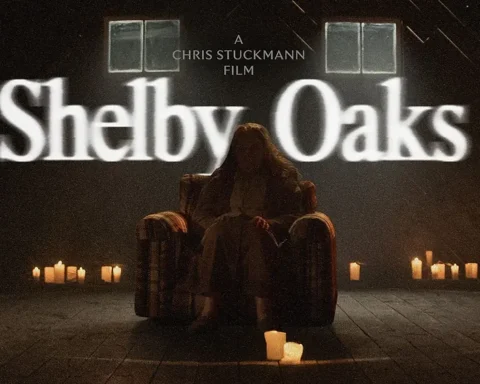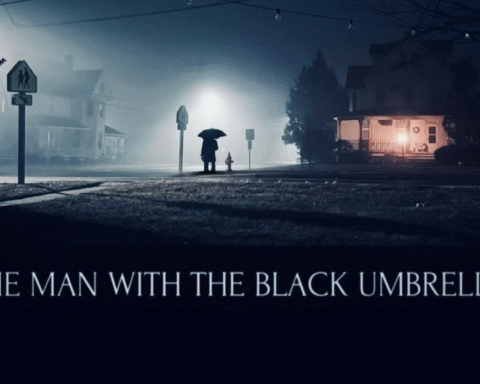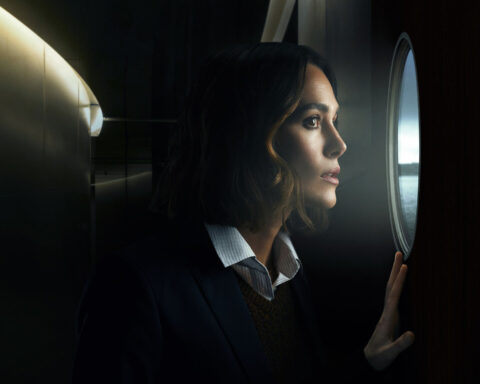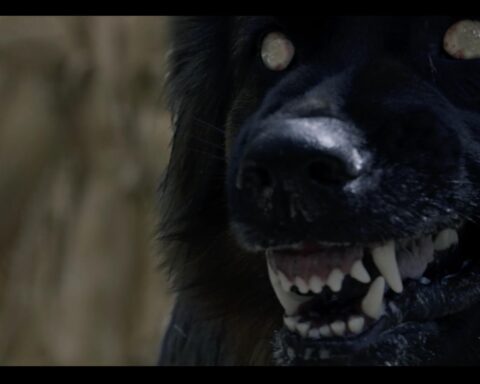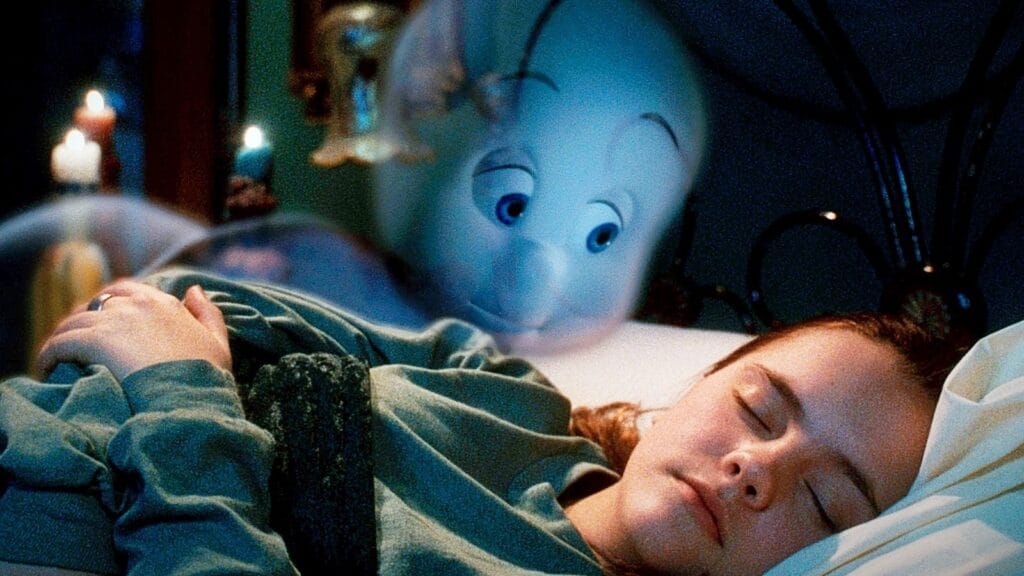Ah, Deadpool—Marvel’s R-rated love letter to bad behavior, dark humor, and gratuitous violence. A franchise where the only thing sharper than the katana blades is the wit of its titular anti-hero. He’s not your average spandex-wearing, goodie-two-shoes superhero who believes in saving the world and getting a gold star for attendance. No, Deadpool, a.k.a. Wade Wilson, is the gloriously twisted, self-aware mercenary who’d rather slice through a horde of baddies than sit through another origin story monologue. He’s the guy who takes a sledgehammer to the fourth wall, all while making you laugh, cringe, and question your own moral compass. Welcome to the Deadpool franchise, where the blood flows freely, the jokes hit below the belt, and the lead character knows he’s in a movie—and, frankly, doesn’t give a f*ck.

Deadpool (2016): The Birth of a Franchise and Ryan Reynolds’ Redemption Arc
Let’s start at the beginning, which, according to Deadpool, is a good place to start unless you’re in a Tarantino movie. Released in 2016, the first Deadpool film was a much-needed breath of fresh air—or more accurately, a whoopee cushion in the otherwise somber Marvel movie landscape. It marked the first time Ryan Reynolds got to play the character the way he was meant to be played, unlike the cinematic crime against humanity that was X-Men Origins: Wolverine. (Yes, we’re going there.)
Deadpool’s plot, if you can call it that, follows Wade Wilson, a mercenary with a heart of gold—if gold were dipped in crude oil and sarcasm—who finds himself diagnosed with terminal cancer. Enter the Weapon X program, promising to cure his cancer but instead leaving him disfigured and with a healing factor that makes Wolverine look like a Band-Aid enthusiast. Seeking revenge, Wade becomes Deadpool, a moniker that sounds like it was created during a drunken game of Scrabble but sticks around because it’s catchy and terrifyingly accurate.
The first Deadpool movie was essentially a love story wrapped in a revenge story with a side of crass humor and enough blood to make Quentin Tarantino blush. Morena Baccarin plays Vanessa Carlysle, Wade’s love interest, who is the kind of girlfriend every guy dreams of—she’s hot, she’s understanding, and she’s totally okay with her boyfriend being a deformed killing machine. The villains are Ajax (Ed Skrein) and Angel Dust (Gina Carano), who are so forgettable that you almost expect Deadpool to kill them out of sheer narrative convenience rather than any real plot motivation.

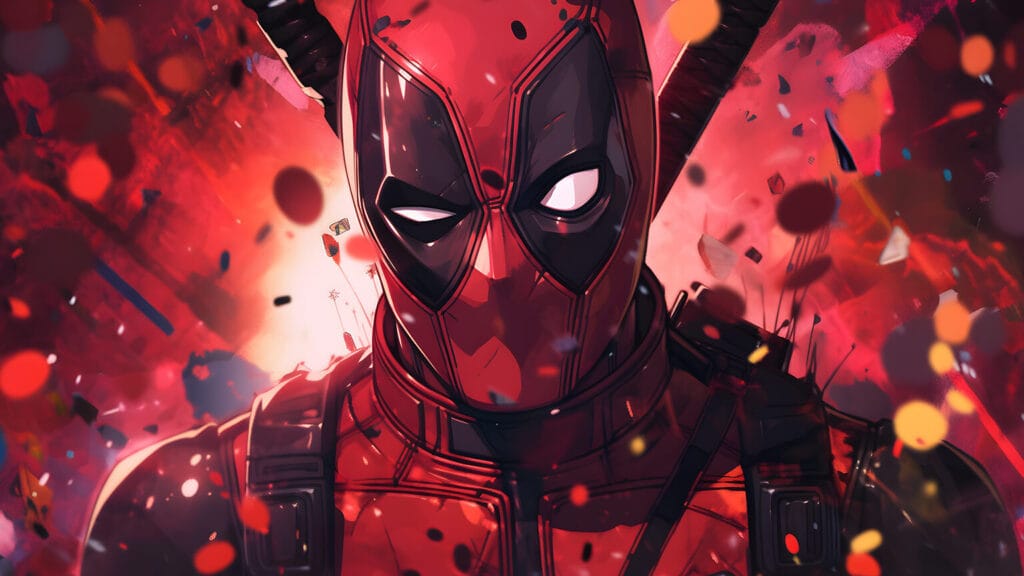
Comparing to the Comics: A Relationship as Complex as Deadpool’s Psyche
For those unacquainted with the comic book version of Deadpool, the film does an excellent job capturing his essence, which is to say, it’s all over the place. Deadpool in the comics is known for his rapid-fire humor, breaking the fourth wall, and being utterly unpredictable—a walking, talking, slicing, and dicing meme before memes were even a thing. He debuted in New Mutants #98 in 1991, created by Fabian Nicieza and Rob Liefeld. Originally, Deadpool was more of a straight-up villain—basically what you’d get if you crossed Spider-Man with a sociopath. Over time, however, he evolved into a character that is as beloved for his flaws as he is for his virtues (what little of those he has).
The movie doesn’t stray far from the comic book version, except in toning down the sheer absurdity of it all—because, let’s face it, the comic book Deadpool is a character who once fought a giant evil version of himself, died, and then came back to life because Death has a crush on him. (Yes, the Grim Reaper has a thing for Wade Wilson—take that, Thanos.) The film also wisely skips over some of Deadpool’s more convoluted backstory elements, like the time he was a test subject for the Canadian government’s attempt to recreate the success of Weapon X, or how he was sent on a mission to kill Cable, only to become best frenemies with him instead. Instead, the film keeps things simple: Deadpool is out for revenge, and nothing—not even his lack of skin care routine—is going to stop him.

Breaking the Fourth Wall: When a Character Knows He’s in a Movie
One of the key features of Deadpool, both in the comics and the movies, is his awareness that he’s a fictional character. This “breaking the fourth wall” has been part of Deadpool’s shtick from the start, and the movie took full advantage of it. From the opening credits, where the actors are listed as “A Hot Chick,” “A CGI Character,” and “God’s Perfect Idiot” (hint: that’s Reynolds), to the myriad asides Deadpool throws at the audience, this was a movie that knew it was a movie. And it wanted to make damn sure you knew that it knew.
This self-awareness is what sets Deadpool apart from the rest of the Marvel Cinematic Universe (MCU), which, let’s be honest, can take itself a little too seriously sometimes. Deadpool, however, treats the entire superhero genre with the kind of irreverence usually reserved for stand-up comedians and nihilists. He even pokes fun at the X-Men, commenting on the franchise’s convoluted timeline, and laments the fact that they couldn’t afford more than two X-Men characters in his movie. It’s a meta-narrative that works because it doesn’t just acknowledge the audience—it makes them a part of the joke.

The Violence: So Much Blood, So Few Morals
Of course, no discussion of Deadpool would be complete without mentioning the violence. In the comics, Deadpool’s exploits are often so bloody that they make The Walking Dead look like a kids’ show. The movie didn’t shy away from this, earning itself a well-deserved R-rating. Heads roll, limbs fly, and bullets do more than just graze shoulders. This is a movie where the violence isn’t just a means to an end—it’s part of the fun. Deadpool kills with a smile on his face and a wisecrack on his lips, making you feel both entertained and slightly guilty for laughing.

Deadpool 2 (2018): Bigger, Bloodier, and Somehow Even Funnier
If the first Deadpool movie was like an unexpected punch to the gut—painful but strangely satisfying—then Deadpool 2 is like taking that punch and adding a few more kicks for good measure. Released in 2018, Deadpool 2 didn’t just meet expectations—it exceeded them in a way that only a movie featuring a mutant with the power to vomit acid can.
The sequel sees Deadpool facing his biggest challenge yet: losing Vanessa to an assassin’s bullet and subsequently trying to blow himself up in a spectacularly failed suicide attempt. (Spoiler alert: Deadpool can’t die. It’s kind of his thing.) After his failed self-immolation, Wade ends up in an X-Men trainee outfit—because Colossus is nothing if not persistent—only to royally screw up a mission and get thrown into prison with a young, fiery mutant named Russell Collins (Julian Dennison), a.k.a. Firefist. Things take a turn for the apocalyptic when Cable (Josh Brolin), a time-traveling, half-cyborg, half-badass from the future, shows up to kill Russell before he can grow up to become a murderous psychopath.




But wait, there’s more! Deadpool decides to form his own super-team, the aptly named X-Force, which includes the luck-powered Domino (Zazie Beetz) and… well, a bunch of other guys who don’t make it past the first mission. Spoiler: X-Force’s first mission is a total disaster, but at least it’s a hilarious one. The movie culminates in a battle against Juggernaut, who literally rips Deadpool in half—a scene that would be more disturbing if it weren’t for the fact that Wade grows his lower half back, toddler-style, in one of the film’s most grotesquely funny moments.

Deadpool & Wolverine (2024) : A blast from the past and a slap on the (butt) cheek
Grab your chimichangas and buckle up, because Deadpool & Wolverine is an absolute blast! This movie is like a carnival ride through the darkest corners of the Marvel Universe, and I mean that in the best way possible. If you’ve been craving a film that mixes crude humor, mind-bending multiverse antics, and the kind of nostalgia that makes you want to break out your old VHS tapes, this is it.
Let’s start with the obvious—Ryan Reynolds as Deadpool and Hugh Jackman as Wolverine. These two are like peanut butter and chocolate: individually awesome, but together? Pure magic. Their collaboration is the stuff of legends, with a backstory that’s both moving and tantalizing. Watching Wade and Logan try to save the multiverse, bicker like an old married couple, and slice their way through hordes of enemies was everything I never knew I needed. It’s like The Odd Couple if Oscar and Felix had adamantium claws and a propensity for breaking the fourth wall.




And speaking of show-stealers, let’s talk about Elektra and Blade. Their comebacks had me cheering louder than when I found out Deadpool got renewed for a third movie. Elektra is back and deadlier than ever, and Blade—well, let’s just say he’s still the vampire hunter we all know and love, but with even more swagger. Honestly, this film left me hoping for a full reboot of their franchises because they deserve every bit of it. The nostalgia was so thick you could cut it with Wolverine’s claws, and I’d gladly watch these characters take on the big screen again.
But wait, there’s more! Marie-Poupette, also known as Dogpool, makes her debut, and I’m telling you right now—she deserves a franchise of her own. This little mutant mutt steals scenes left and right, proving that even in a world of superheroes, a good dog can still be the best hero. She’s adorable, she’s deadly, and she’s got more personality than most of the Avengers combined.
And then there’s Lady Deadpool, who bursts onto the screen with an atomic-level entrance that will have fans grinning from ear to ear. Her brief but explosive appearance is just one more reason this movie is an A+ production.




The villain, Cassandra Nova, is like an evil, time-traveling Amelia Earhart—completely deranged, but you can’t look away. She’s the perfect blend of terrifying and fascinating, and watching her go toe-to-toe with Deadpool and Wolverine was a thrill.
Now, let’s not forget the soundtrack, which, as always, is a retro dance delight. From Bye Bye Bye by the Backstreet Boys to You’re the One That I Want from Grease, the music choices are as cheeky and nostalgic as the movie itself. It’s the kind of soundtrack that makes you want to break out the vinyl and start a dance party, even if you’re just in your living room.

In conclusion, Deadpool & Wolverine is a third installment that delivers on every front. It’s crude, hilarious, action-packed, and filled with enough Marvel references to keep even the most die-hard fans entertained. The performances are stellar, the plot is to die for (literally, in some cases), and the whole package is just an absolute delight. A+ all the way! Now, if you’ll excuse me, I’m off to campaign for that Dogpool spin-off.
The Comic Book Connections: Time Travel and Team-Ups
Deadpool 2 takes a lot of inspiration from the comic book lore, particularly in its use of Cable and X-Force. Cable, the gruff, time-traveling mutant with a love for big guns, first appeared in New Mutants #87 in 1990 and quickly became one of the most popular characters in the X-Men universe. His connection to Deadpool is one of the more complex and entertaining relationships in Marvel Comics, with the two characters often working together despite their wildly different approaches to… well, everything. The movie does a good job of capturing this dynamic, with Deadpool constantly needling Cable with jokes, much to the latter’s stoic chagrin.
X-Force, meanwhile, is a superhero team that Deadpool has been associated with in the comics on and off since the 1990s. Unlike the X-Men, who are all about peace and understanding, X-Force is more about doing whatever it takes to get the job done, even if that means getting your hands dirty—very, very dirty. The movie version of X-Force is more of a parody than a true representation of the comic book team, but it works because, let’s face it, a Deadpool movie that took itself too seriously wouldn’t be a Deadpool movie at all.

Death and Resurrections: Deadpool’s Relationship with Mortality
One of the recurring themes in Deadpool 2 is Wade’s constant flirtation with death, both literally and metaphorically. After losing Vanessa, Deadpool is ready to give up on life entirely, even going so far as to blow himself to bits. But death, it seems, is not in the cards for Wade Wilson—not permanently, anyway. In the comics, Deadpool’s relationship with death is even more complicated. He’s been cursed with immortality by Thanos, who’s jealous of Deadpool’s romantic connection with the personification of Death. Yes, you read that correctly—Deadpool is in a love triangle with Thanos and Death itself. It’s like The Bachelor, but with more decapitations.
The movie doesn’t dive into this bizarre comic book love story, but it does play with the idea that Deadpool is constantly trying—and failing—to die. His regenerative healing factor means that no matter how badly he’s injured, he always bounces back, which is both a blessing and a curse. It’s a concept that the movie handles with a surprising amount of depth, given that this is a film where one of the major plot points involves time travel and killing Nazis.
Dark Humor and the Art of Not Giving a Sh*t
The humor in Deadpool 2 is even darker and more biting than in the first film, which is saying something. The movie pulls no punches when it comes to its jokes, whether they’re about suicide, death, or even Disney’s acquisition of Fox (a joke that seems even more prescient now that Deadpool is officially part of the MCU). The film’s willingness to go to places that other superhero movies wouldn’t dare is part of what makes it so unique—and so damn funny.
But it’s not just about being edgy for the sake of being edgy. The humor in Deadpool 2 is also incredibly self-aware, poking fun at everything from superhero tropes to pop culture to the very nature of sequels themselves. There’s a sense that the movie knows it’s a follow-up to a smash hit, and it’s determined not to fall into the usual sequel traps—except when it can make fun of them, of course.

Deadpool’s Place in the Marvel Universe: An R-Rated Outlier
Now that Deadpool has officially joined the Marvel Cinematic Universe, thanks to Disney’s acquisition of 20th Century Fox, the question on everyone’s mind is: How the hell is this going to work? The MCU is known for its family-friendly, PG-13 approach to superhero movies, and Deadpool is about as family-friendly as a Tarantino movie. There’s a real concern that bringing Deadpool into the MCU will mean watering down the character’s R-rated appeal.
But fear not, true believers—Ryan Reynolds has assured fans that Deadpool will remain R-rated, even within the MCU. How exactly this will work is anyone’s guess, but it’s safe to say that Deadpool’s entry into the MCU is going to shake things up in a big way. Imagine Deadpool interacting with characters like Spider-Man or Thor, and you can already see the potential for hilarity. It’s like adding a shot of tequila to a perfectly good beer—sure, it might ruin the flavor, but it’s going to get you there a hell of a lot faster.
Comparing Deadpool to Other Marvel Movies: Like Comparing a Chainsaw to a Swiss Army Knife
Deadpool isn’t like the other Marvel heroes. He doesn’t have Captain America’s moral compass, Iron Man’s genius, or Thor’s god-like powers. What he does have is a mouth that never stops, a body that won’t quit (no matter how hard he tries), and a complete lack of respect for pretty much everything. And that’s what makes him so special.
In comparison to other Marvel movies, the Deadpool films are like that weird cousin who shows up to Thanksgiving dinner in a clown costume and proceeds to make everyone laugh and feel uncomfortable at the same time. While the rest of the MCU is busy saving the world and teaching us about the importance of teamwork, Deadpool is off in his own little corner, making dick jokes and blowing stuff up.
But that’s what makes the Deadpool franchise so important to the Marvel Universe. It’s a reminder that not all heroes wear capes—or take themselves seriously. Deadpool is the antithesis of everything we’ve come to expect from superhero movies, and that’s why we love him. He’s a character who can get away with saying and doing things that would get any other hero kicked out of the Avengers faster than you can say “Hulk smash.”

The Future of Deadpool: Will the Merc with a Mouth Keep His Edge?
With Deadpool 3 on the horizon and the character’s official entry into the MCU all but confirmed, the future looks bright for our favorite anti-hero. But with great power comes great responsibility—or in Deadpool’s case, the great responsibility to keep being as irreverent, violent, and hilarious as ever. The challenge will be maintaining the character’s edge while integrating him into a larger, more family-friendly universe.
But if there’s one thing we’ve learned from the Deadpool franchise, it’s that Wade Wilson always finds a way to break the rules—and the fourth wall. Whether he’s teaming up with Spider-Man, joining the Avengers (unlikely but hilarious), or just continuing to do his own thing, Deadpool will continue to be the breath of fresh, foul-mouthed air that the Marvel Universe needs. And let’s be honest—after all the world-saving, universe-collapsing, and time-traveling shenanigans, the MCU could use a little more Deadpool.
Why We Need Deadpool Now More Than Ever
In a world full of superheroes who always do the right thing, Deadpool is the one who reminds us that sometimes it’s okay to do the wrong thing—as long as you’re funny while doing it. He’s the hero we deserve, even if he’s not the one we need right now. Or maybe he is. In a time when the world can feel a bit too serious, we need a character who doesn’t take anything seriously, least of all himself.
So here’s to Deadpool: the merc with a mouth, the king of crass, and the superhero who doesn’t give a f*ck. We can’t wait to see what kind of trouble he gets into next. Whether he’s slicing through bad guys, breaking the fourth wall, or just making us laugh at things we probably shouldn’t, Deadpool is here to stay. And we wouldn’t have it any other way.

